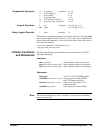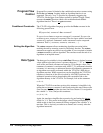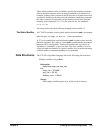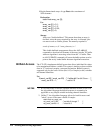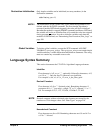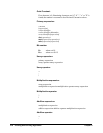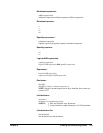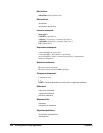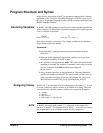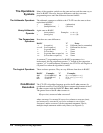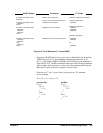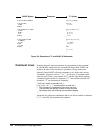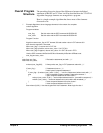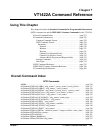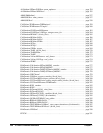
Creating and Running Algorithms 217Chapter 6
Program Structure and Syntax
In this section, the portion of the 'C' programming language that is directly
applicable to the VT1422A' Algorithm Language will be discussed. To do
this, the 'C' Algorithm Language elements will be compared with equivalent
BASIC language elements.
Declaring Variables In BASIC, the DIM statement is usually used to name variables and allocate
space in memory for them. In the Algorithm Language, the variable type and
a list of variables is specified:
BASIC 'C'
DIM a, var, array(3) static float a, var, array[ 3 ];
Here, three variables are declared. Two simple variables: a and var and a
single dimensioned array: array.
Comments:
• Note that the 'C' language statement must be terminated with the
semicolon ";".
• Although in the Algorithm Language all variables are of type float,
they must be explicitly declared as such.
• All variables in an algorithm are static. This means that each time the
algorithm is executed, the variables "remember" their values from the
previous execution. The static modifier must appear in
the declaration.
• Array variables must have a single dimension. The array dimension
specifies the number of elements. The lower bound is always zero (0)
in the Algorithm Language. Therefore, the variable My_array from
above has three elements: My_array [0] through My_array[2].
Assigning Values BASIC and 'C' are the same here. In both languages, the symbol "=" is used
to assign a value to a simple variable or an element of an array. The value
can come from a constant, another variable or an expression. Examples:
a = 12.345;
a = My_var;
a = My_array[ 2 ];
a = (My_array[ 1 ] + 6.2) / My_var;
NOTE In BASIC, the assignment symbol "=" is also used as the comparison
operator "is equal to." For example; IF a=b THEN ... . It will be seen later in
this chapter that 'C' uses a different symbol for this comparison.



